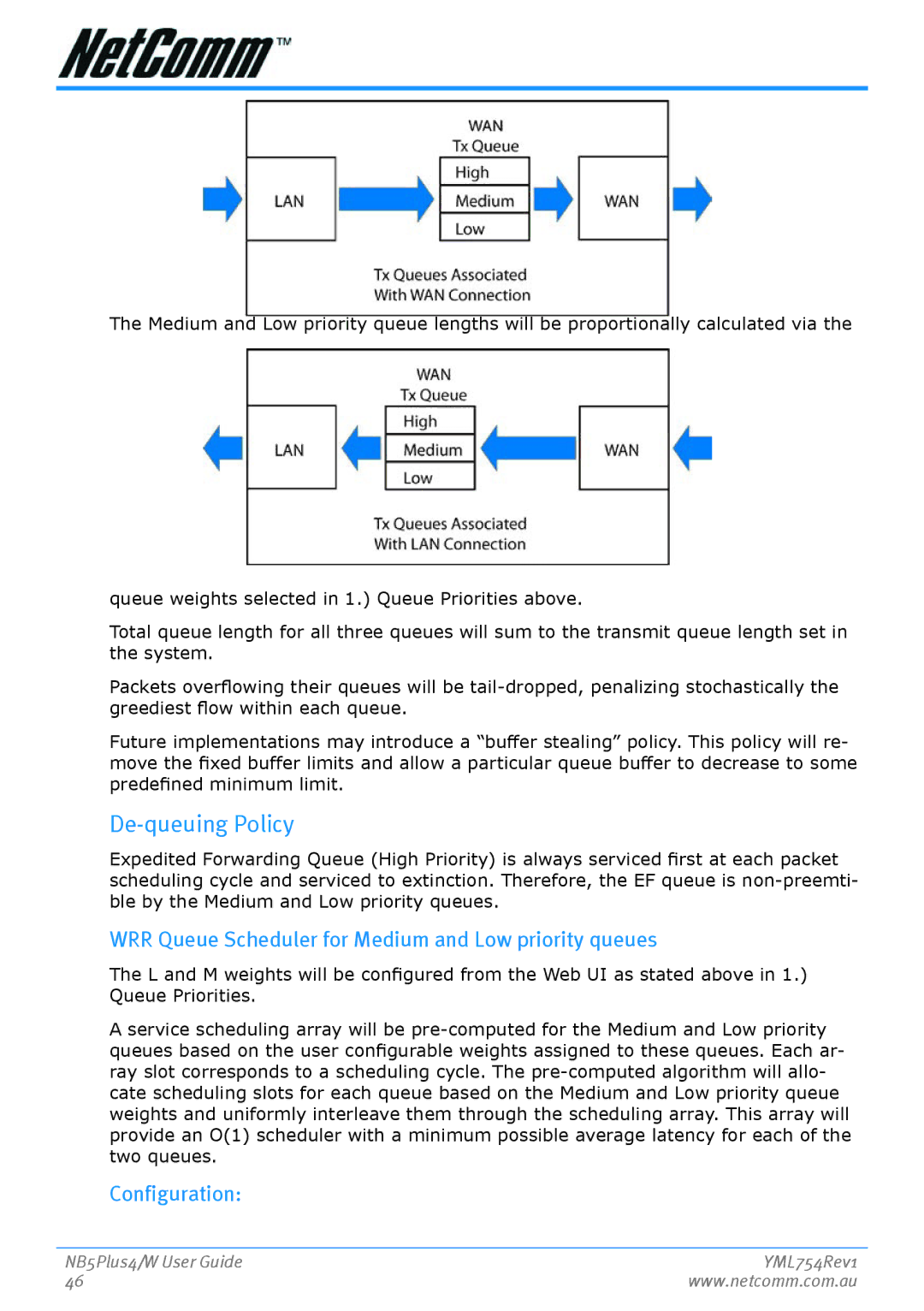
The Medium and Low priority queue lengths will be proportionally calculated via the
queue weights selected in 1.) Queue Priorities above.
Total queue length for all three queues will sum to the transmit queue length set in the system.
Packets overflowing their queues will be
Future implementations may introduce a “buffer stealing” policy. This policy will re- move the fixed buffer limits and allow a particular queue buffer to decrease to some predefined minimum limit.
De-queuing Policy
Expedited Forwarding Queue (High Priority) is always serviced first at each packet scheduling cycle and serviced to extinction. Therefore, the EF queue is
WRR Queue Scheduler for Medium and Low priority queues
The L and M weights will be configured from the Web UI as stated above in 1.) Queue Priorities.
A service scheduling array will be
Configuration:
NB5Plus4/W User Guide | YML754Rev1 |
46 | www.netcomm.com.au |
